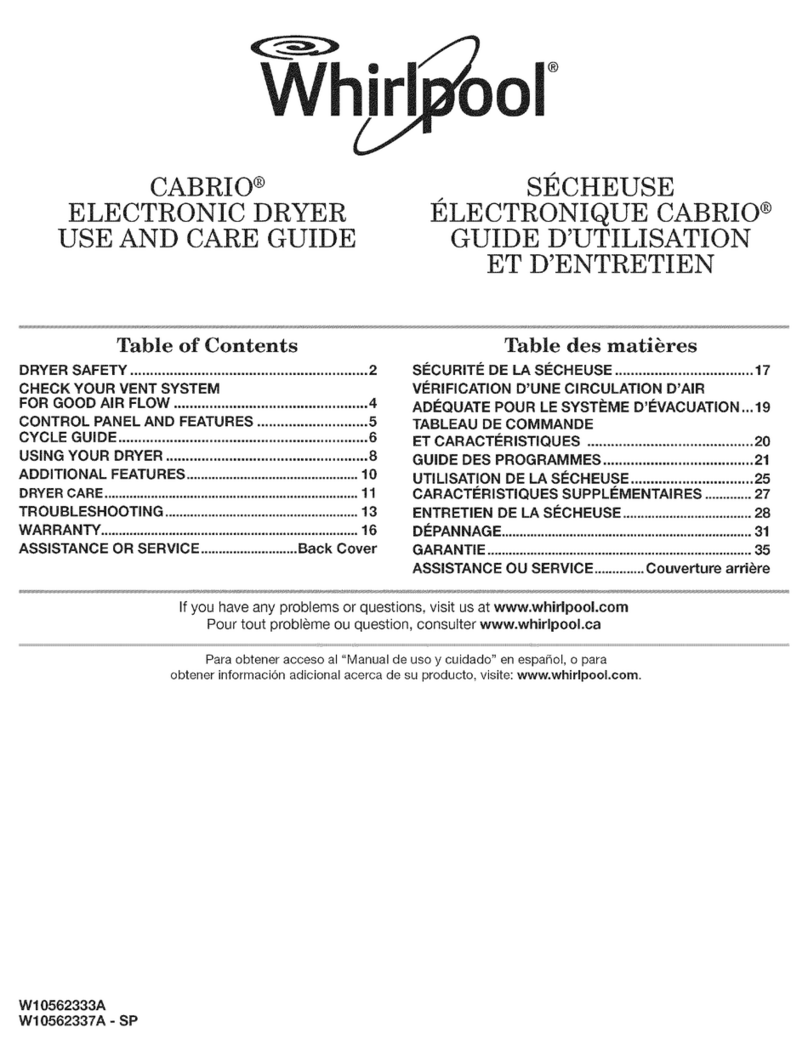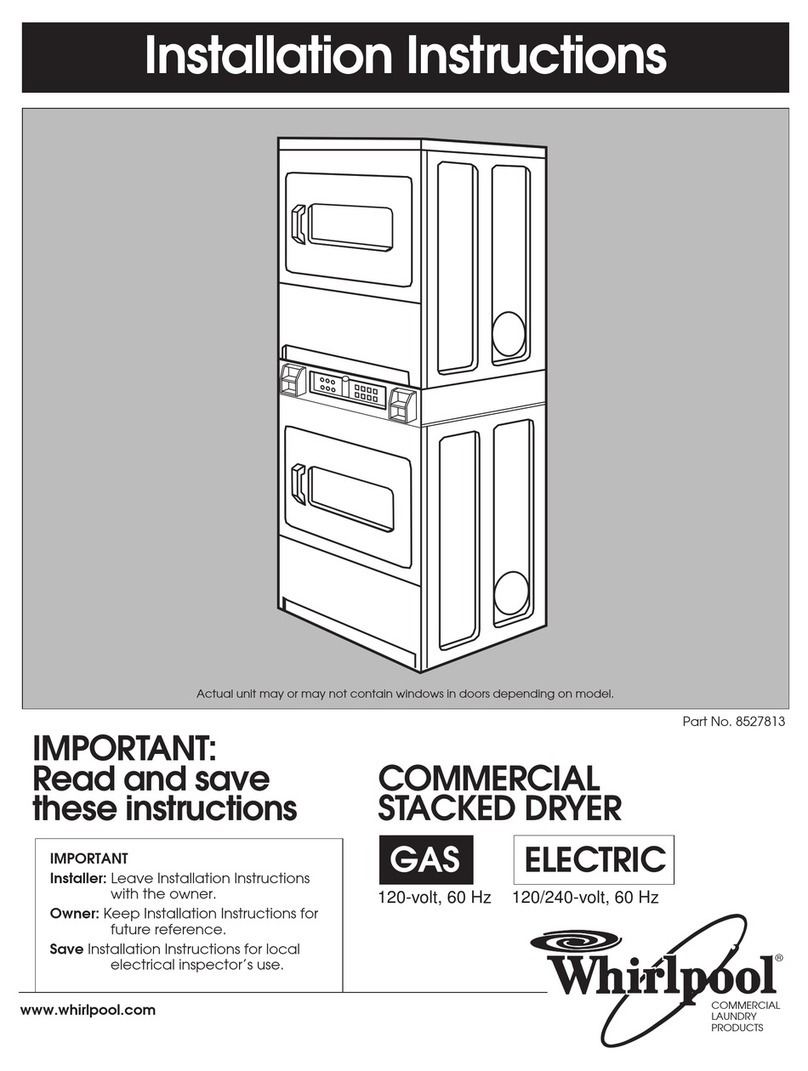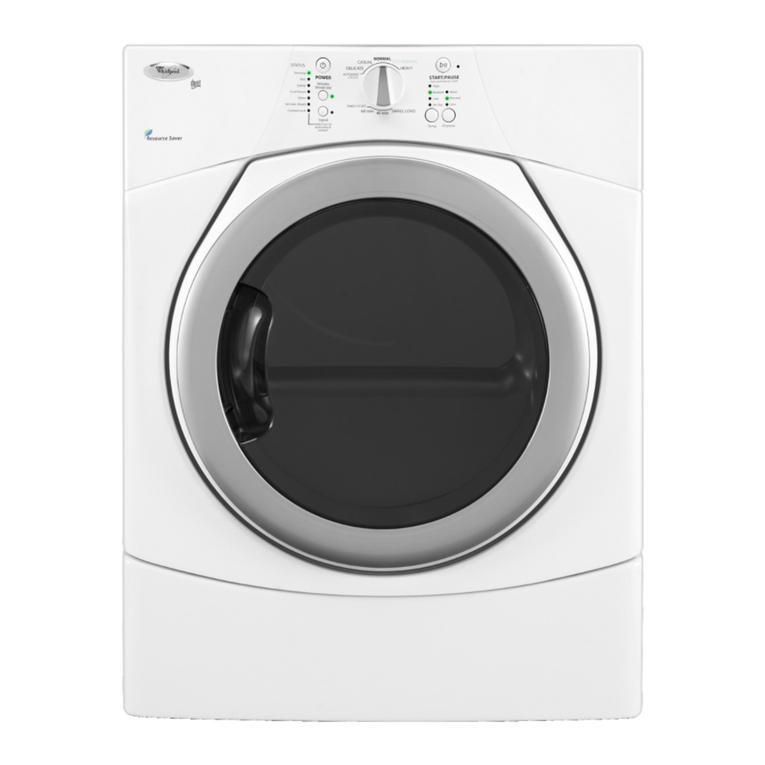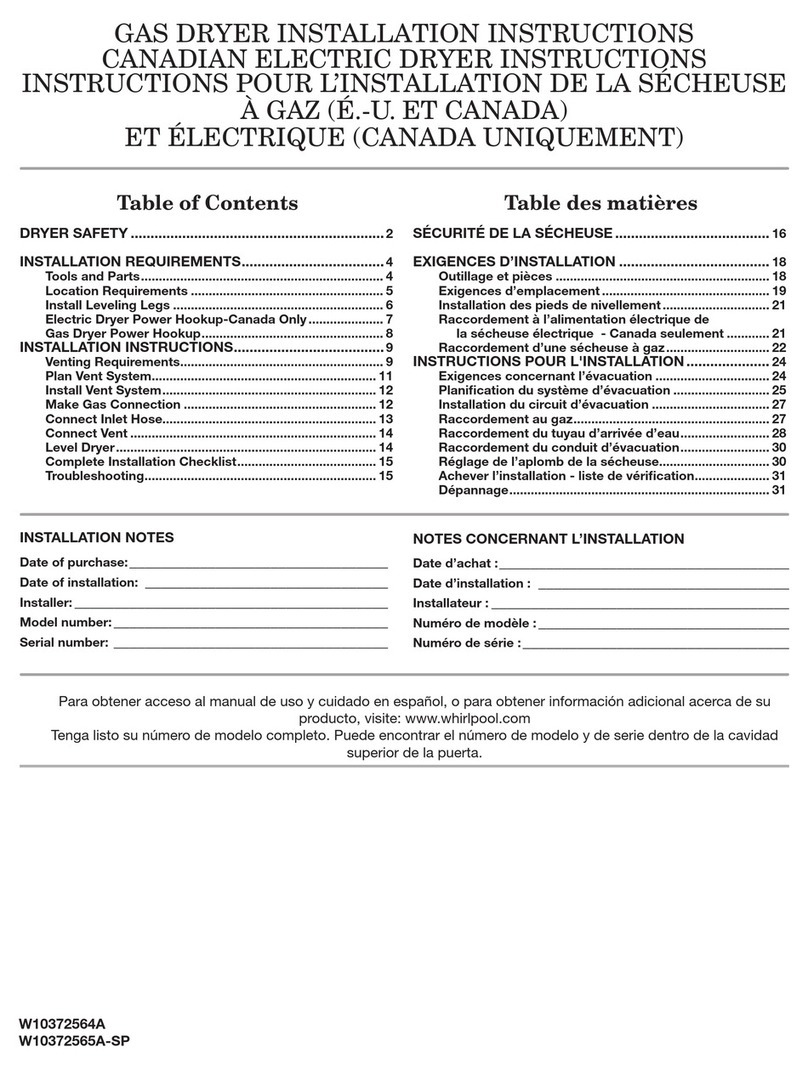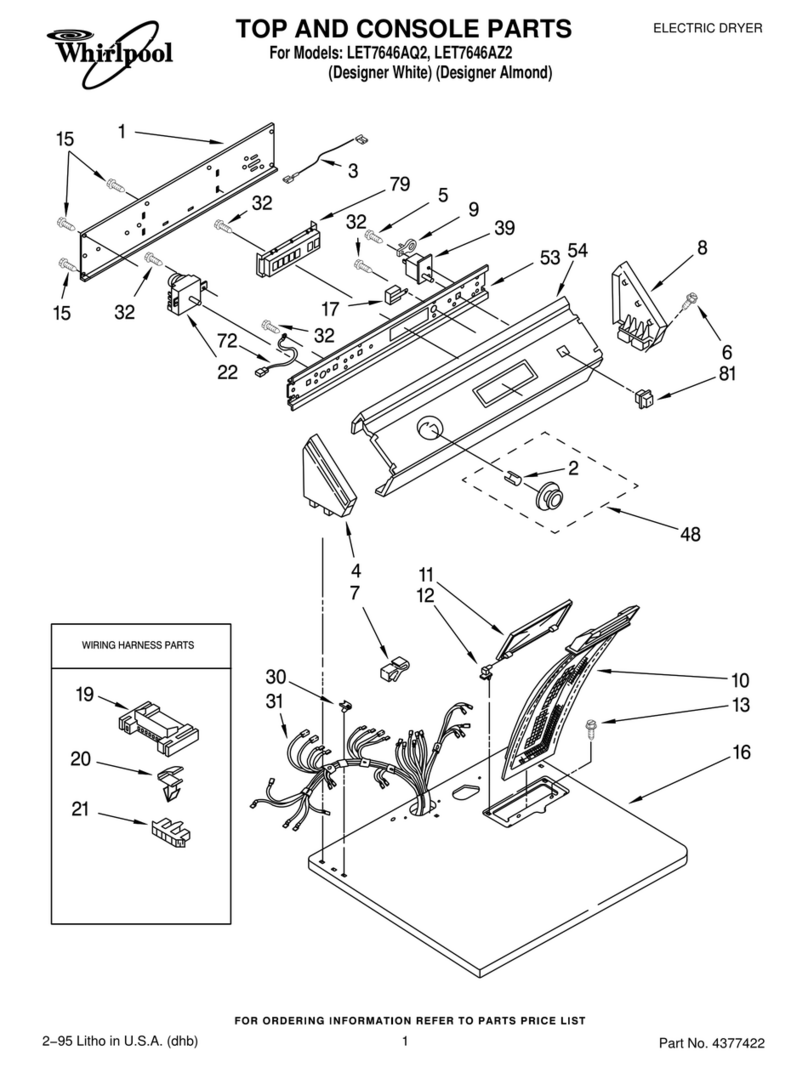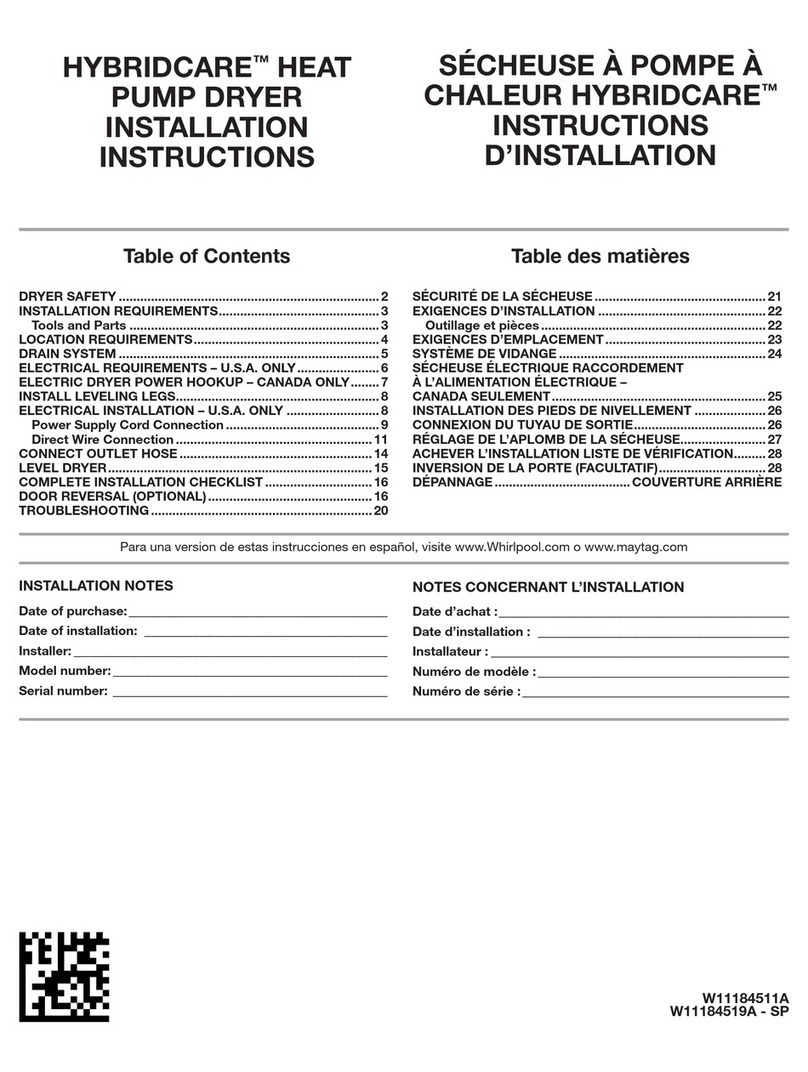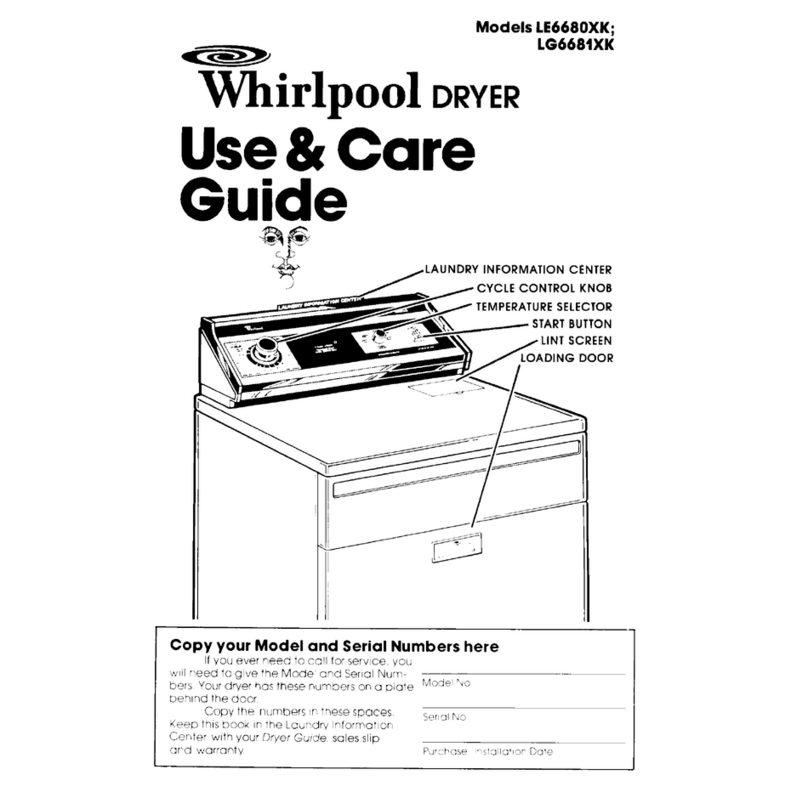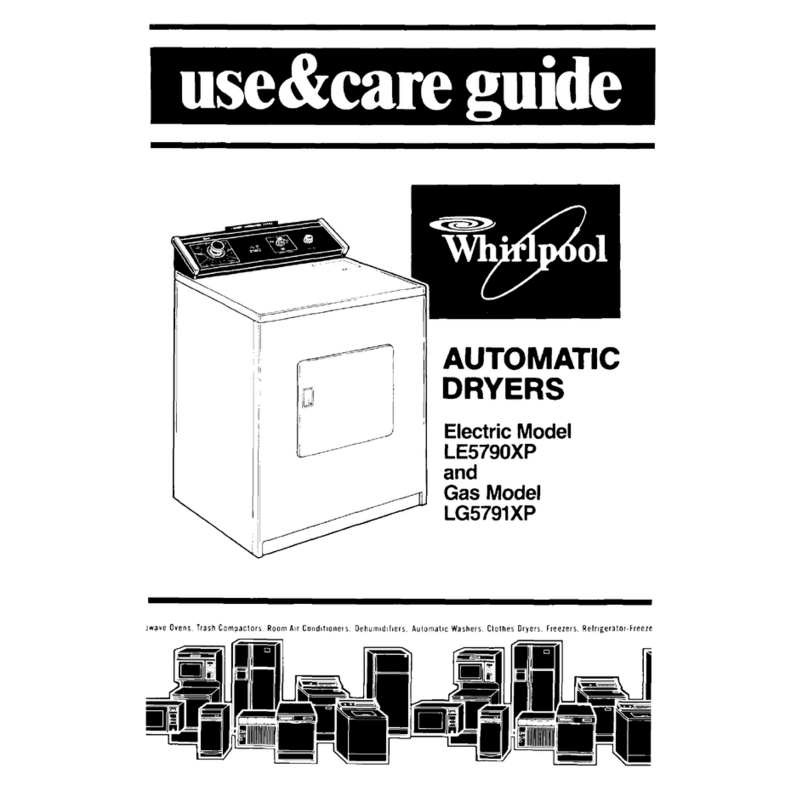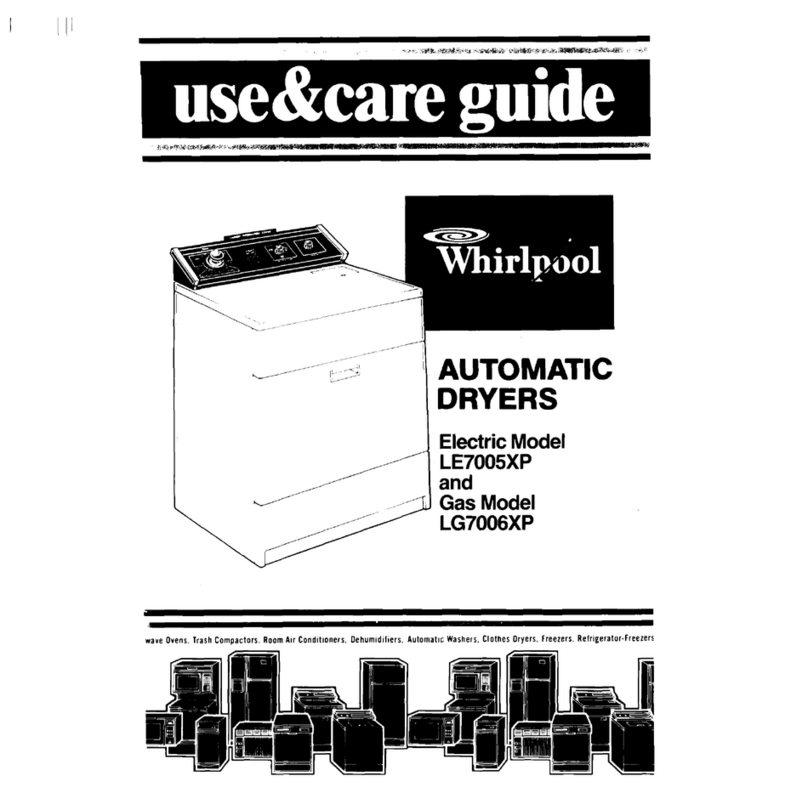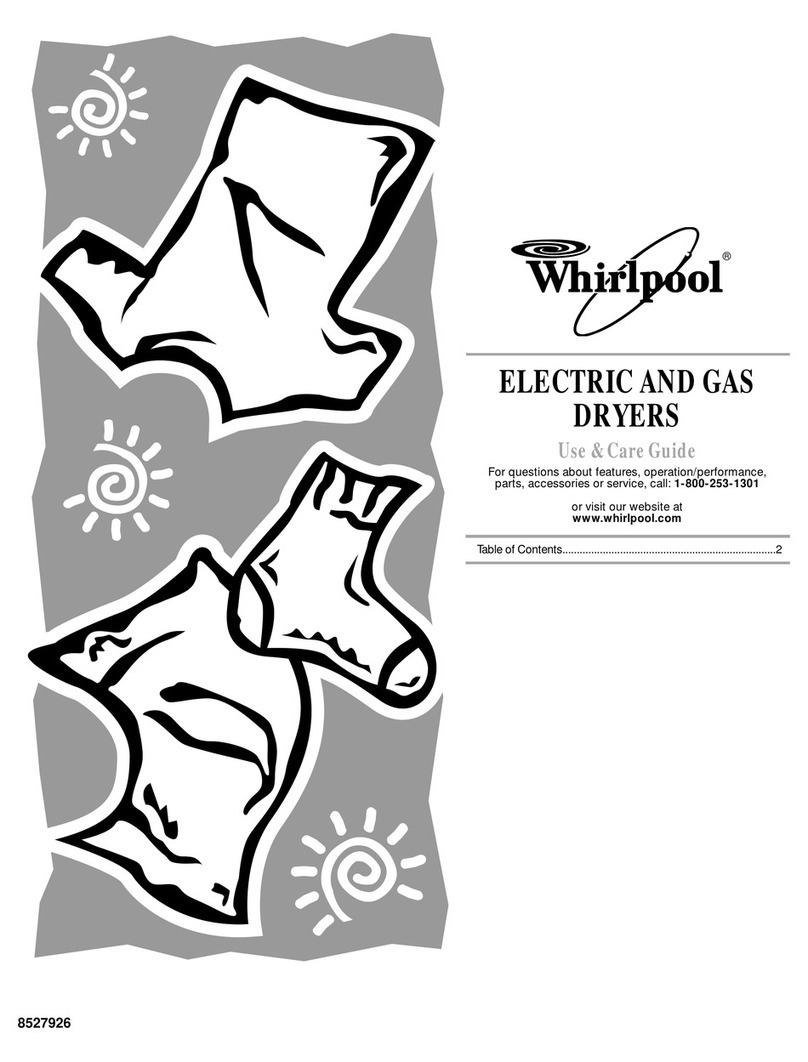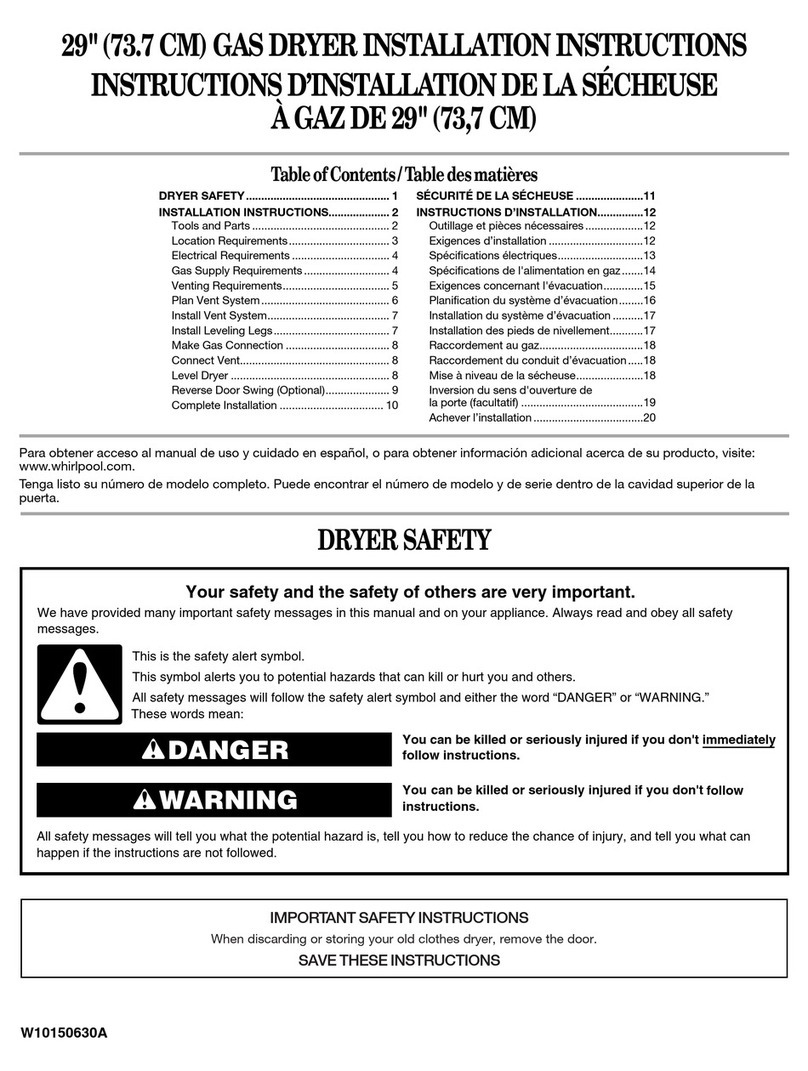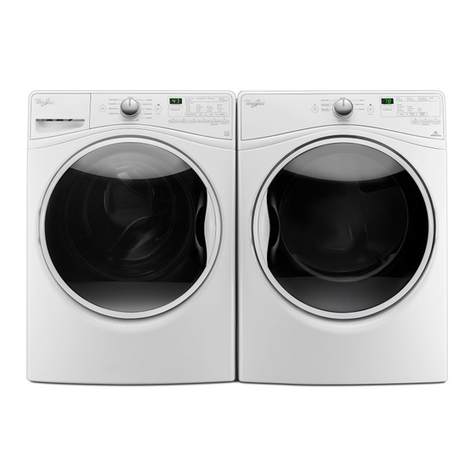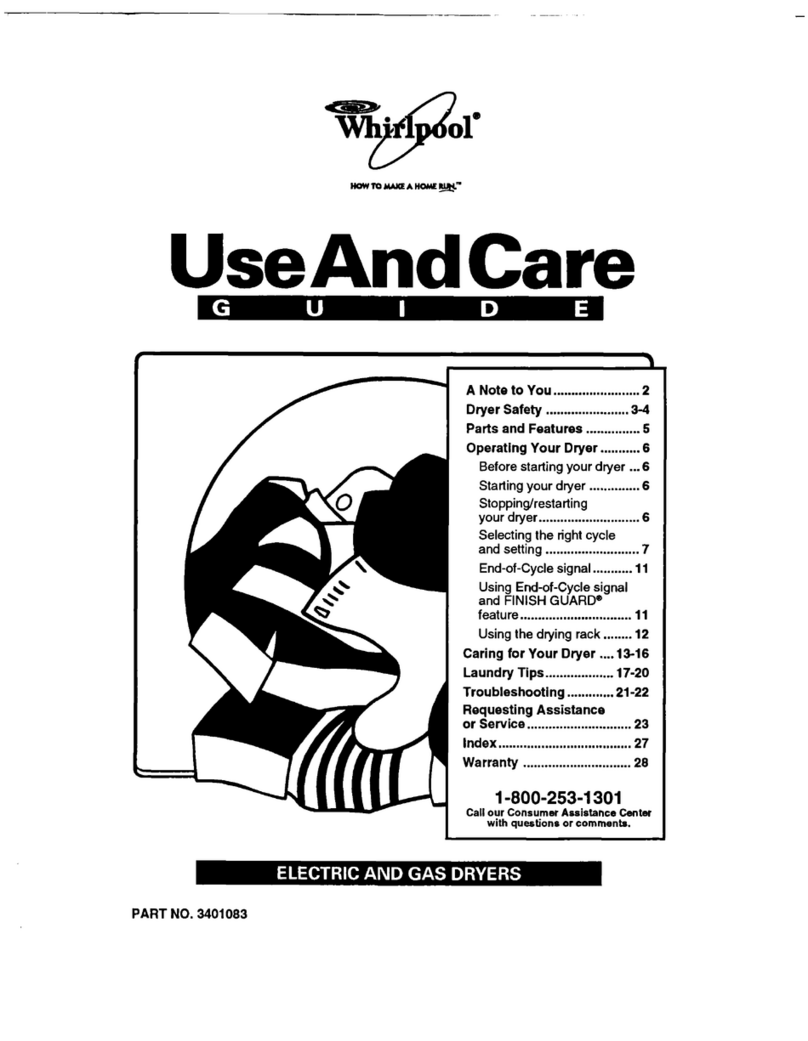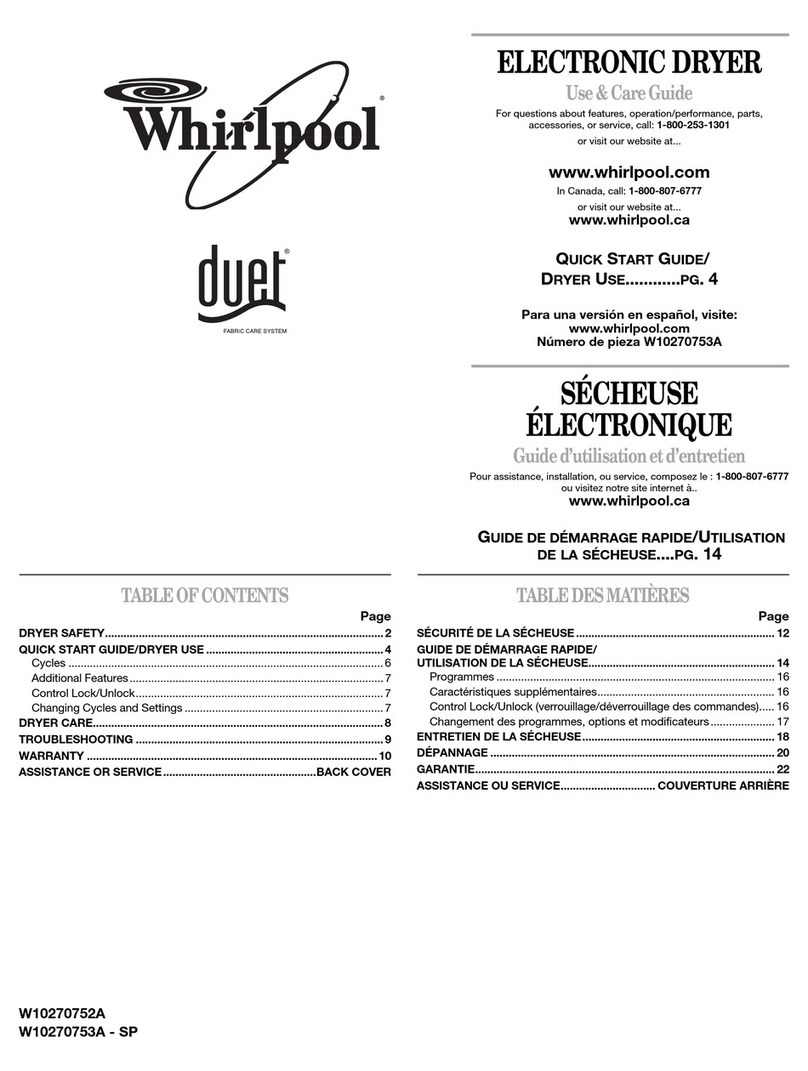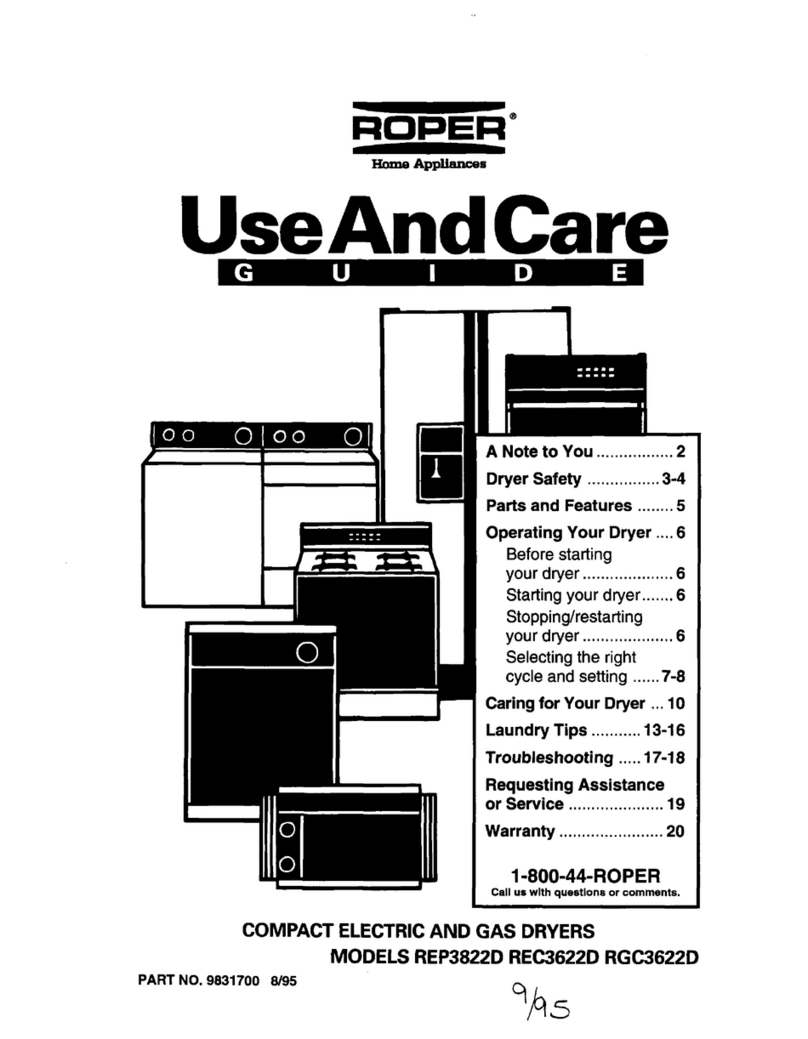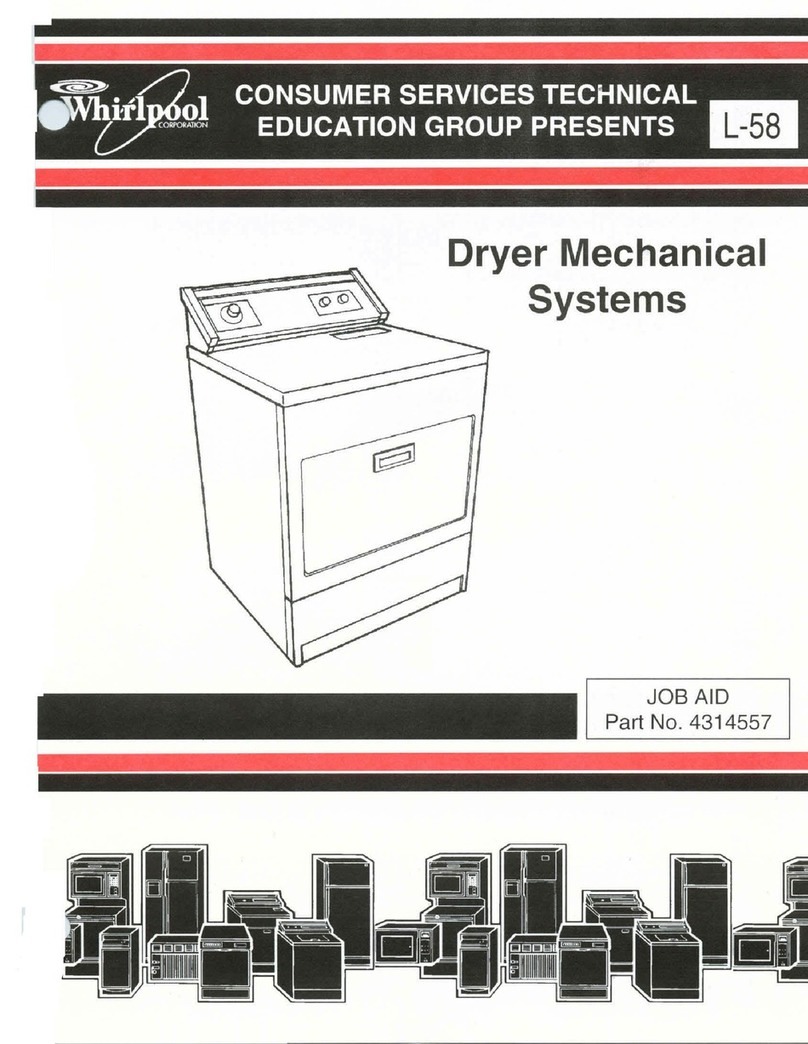
5. Exhaust outlet at rear of dryer IS located as shown In
Figure 4. Detailed instructions on spacing for side and
rear clearances can be found In the sectlon “Recessed
and Closet Instructions.“ Also mInImum spacing to side
and rear information is located on a separate label (found
on rear panel).
13. We do NOT RECOMMEND non-metalllc flexible duct.
If you use non-metallic flexible duct you must connect a
METAL elbow and at least 2 feet of METAL duct to the
dryer outlet. The length of the non-metallic flexible duct
should not exceed 7 feet, and It must be adequately
supported to prevent sagging or klnking See FIG. 6.
?ypical E%hauSt Installations
11.15/16” 4” DIA
d&&l
---/. t
3.5132”
Figure 4
6. If you wish IO permanently install the portable dryer,
a
stationary exhaust system is recommended.
7. We strongly recommend exhausting with 4 inch dlame-
ter rigid METAL duct. We strongly recommend METAL
flexible duct if you use flexible duct. NEVER
USE
SMALLER THAN 4 INCH EXHAUST DUCT.
8.The exhaust may
be routed up, down, left. right or
straight through the wall.
9. The exhaust duct should terminate with an exhaust
hood to prevent back drafts. The outlet of the hood must
be at least 12 inches from the ground or any obstruction.
An exhaust hood with a 4 inch outlet is preferred because
it creates less back pressure. A louvered exhaust hood
for 4 inch duct is also recommended. An exhaust hood
with a
2’12
inch outlet creates more back pressure, but
may be Lised with shorter systems. Never use an exhaust
hood with a magnetic latch.
lO.The maximum length of the exhaust system depends
upon the type of duct used, the number of elbows and the
type of exhaust hood. The maximum length for both rigid
and flexible duct is shown in the chart, FIG. 5.
EXHAUST HOOD TYPE
:Y,“,‘::’ p--&@ gb-
MAXIMUM
0 43 Fr. 41 FT. 36 FT. LENGTH OF
1 33 Fr. 31 Fr. 26 FT. 4- DIA.
2 23 FT. 21 FT. 16 FT. RIGID METAL
DUCT.
MAXIMUM
0 30 FT. 29 FT. 24 FT. LENGTH OF
1 24 FT. 23 IT. 16 FT. 4’ DIA
2 16Fl. 15Ff. 10 FT. FLEXIBLE
METAL DUCT.
L
Figure 5
11. Use duct tape to seal
all
joints. Never use screws to
assemble
the ductwork, screws can catch lint.
12. Exhaust
systems
longer
than specified will shorten
the life of the dryer and result in reduction of perform-
ance such as longer drying
time and increased use of
energy. Lint may also accumulate creating a possible
safety hazard.The exhaust system must be cleaned
Periodically, at least every two years.
EXHAUST HOOD ‘1
J
RECOMMENDED
IMPORTANT: PROPER
SUPPORT IS REOUIRED
I - - . . - , . .
DUCTING NOT T
EXCEC” 7 C.zCT
ALTERNATE
Figure 6
NEVER INSTALL ANY TYPE OF FLEXIBLE DUCT CON-
CEALED IN WALLS OR CEILING
14. There are exhaust kits aizlable that allow the filtered
exhaust air to be directed inside to conserve energy
during winter months. Some of these kits cause restric-
tions or excessive back pressure and must NOT be used.
In some locations exhaust moisture may cause building
damage. If you use one of these kits you must maintain it
properly to avoid excessive lint build up which results in
reduced dryer performance. For continued proper opera-
tion the exhaust duct should be inspected periodically,
depending on use. Inspection and cleaning will help
prevent blockage of the exhaust system, reduced air
flow and long drying time. After inspection be sure
to reconnect the exhaust system properly, using
duct tape to fasten the joints.
15.Leveling feet (Part No. 233550) for use in permanent
installations are available at your Whirlpool dealer. Four
feet are required. The feet should extend about 1” below
the bottom of the dryer.
16. If you do not desire to install a permanent exhaust
system, you may purchase a Window Exhaust Kit (No.
LCK3000) from your WHIRLPOOL dealer. The Window
Exhaust Kit is designed to exhaust the dryer out of a
double hung window. Complete instructions are in-
cluded with the kit.
17. For mobile home installations the dryer must be
exhausted to the outside. If the dryer is exhausted
through the floor and the area
under the mobile home is
enclosed, the exhaust system must terminate outside
the enclosure. Extension beyond the enclosure will
prevent the accumulation of lint and moisture under
the mobile home. See Figure 7.
3

